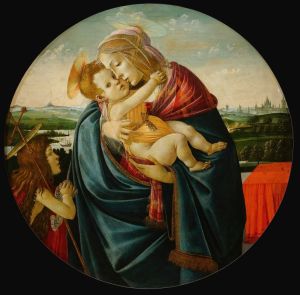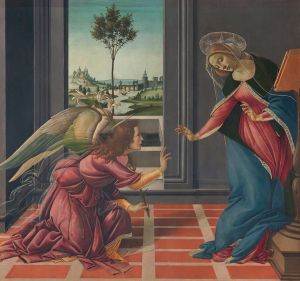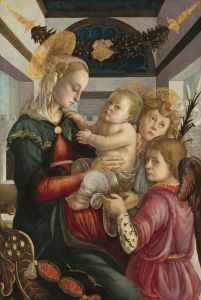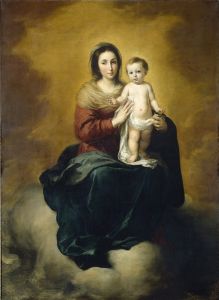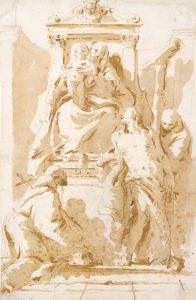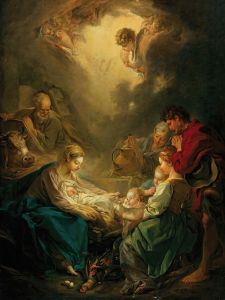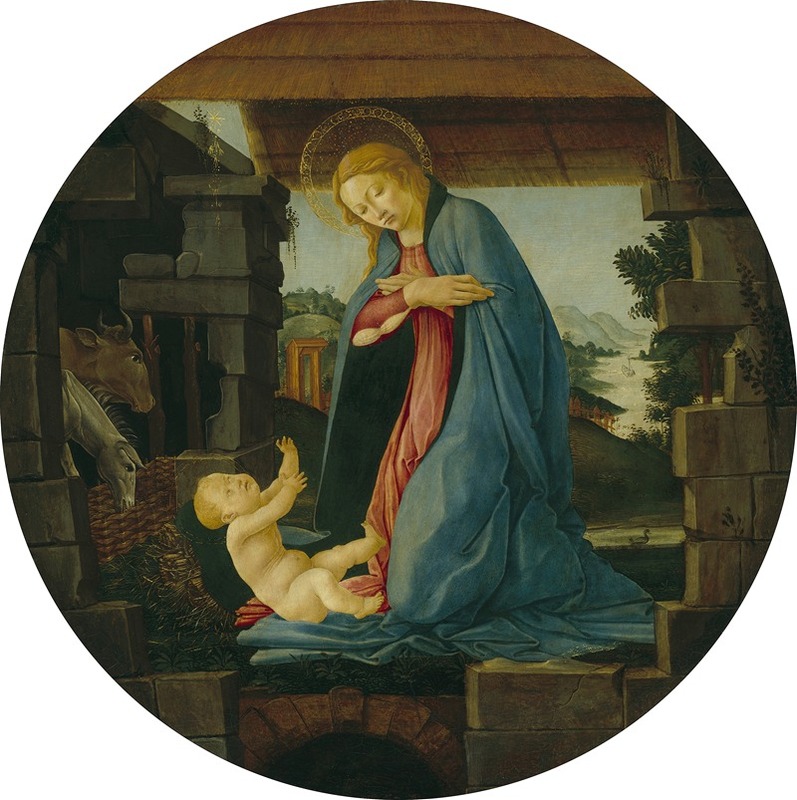
The Virgin Adoring the Child
A hand-painted replica of Sandro Botticelli’s masterpiece The Virgin Adoring the Child, meticulously crafted by professional artists to capture the true essence of the original. Each piece is created with museum-quality canvas and rare mineral pigments, carefully painted by experienced artists with delicate brushstrokes and rich, layered colors to perfectly recreate the texture of the original artwork. Unlike machine-printed reproductions, this hand-painted version brings the painting to life, infused with the artist’s emotions and skill in every stroke. Whether for personal collection or home decoration, it instantly elevates the artistic atmosphere of any space.
"The Virgin Adoring the Child" is a painting by the renowned Italian Renaissance artist Sandro Botticelli. Botticelli, whose full name was Alessandro di Mariano di Vanni Filipepi, was a prominent figure in the Florentine art scene during the late 15th century. He is best known for his mythological works such as "The Birth of Venus" and "Primavera," but he also produced a significant number of religious paintings, among which "The Virgin Adoring the Child" is a notable example.
This painting depicts the Virgin Mary in a moment of quiet adoration, gazing lovingly at the Christ Child. The composition is intimate and serene, capturing a tender moment between mother and child. Botticelli's depiction of the Virgin is characterized by his typical elegance and grace, with flowing lines and delicate features that convey a sense of divine beauty and maternal warmth.
The Christ Child is portrayed in a naturalistic manner, lying on a cushion or a similar soft surface, which adds to the domestic and personal atmosphere of the scene. Botticelli's use of color is subtle yet effective, with a harmonious palette that enhances the overall tranquility of the image. The background is often simple, focusing the viewer's attention on the figures and their interaction.
Botticelli's work is known for its linear quality and attention to detail, both of which are evident in "The Virgin Adoring the Child." The artist's skillful use of line and form creates a sense of movement and life within the painting, while his attention to detail is apparent in the intricate rendering of the Virgin's garments and the delicate features of both figures.
The painting reflects the religious and cultural context of the time, emphasizing themes of devotion and the divine nature of Christ. It is a testament to Botticelli's ability to convey complex theological ideas through visual art, making such themes accessible and emotionally resonant for viewers.
"The Virgin Adoring the Child" is part of Botticelli's broader body of work that explores religious subjects, a common theme for artists of the Renaissance period. This era was marked by a renewed interest in classical antiquity, humanism, and the exploration of religious themes through art. Botticelli's paintings often reflect these influences, combining classical beauty with spiritual depth.
The exact date of creation for "The Virgin Adoring the Child" is not definitively known, but it is generally attributed to the late 15th century, a period when Botticelli was at the height of his artistic career. The painting is housed in various collections, and like many of Botticelli's works, it has been studied and admired for its artistic and historical significance.
Overall, "The Virgin Adoring the Child" exemplifies Botticelli's mastery of religious iconography and his ability to infuse his works with both aesthetic beauty and profound spiritual meaning. It remains an important piece within the canon of Renaissance art, reflecting the enduring legacy of Botticelli's contribution to the world of art.





